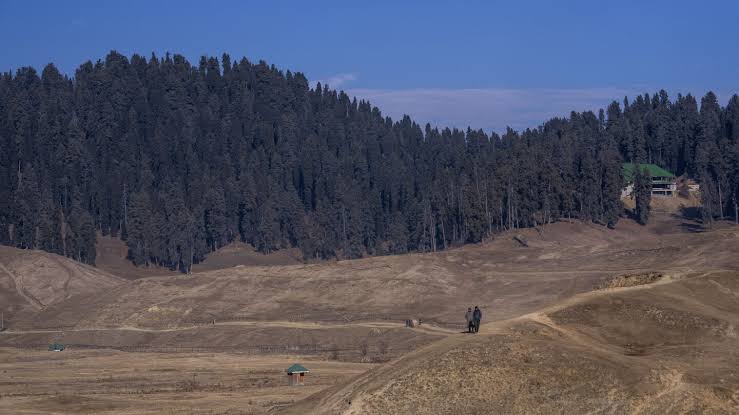Climate change can have far reaching implications: Prof Romshoo
J&K government takes up issue of drying Achabal stream with Geological Survey of India
Sustained conservation efforts vital for survival of water bodies
Jahangeer Ganaie
Srinagar, Feb 18 :
Renowned earth scientist and Vice-Chancellor of the Islamic University of Science and Technology (IUST) Prof Shakeel Romshoo on Tuesday said that snowless winters during the past five years have pushed Kashmir to the brink.
In an exclusive interview with the news agency—Kashmir News Observer (KNO), Prof. Romshoo said that the Kashmir has experienced a significant decline in snowfall over the past five years, particularly during the peak winter season. This has led to the current alarming situation. “Snowfall is a major source of water for Kashmir’s population. With the pervasive lack of snow, rivers, tributaries, and streams are drying up. This could severely impact the tourism sector, horticulture, and food security systems in Kashmir, with far-reaching economic implications,” Prof. Romshoo said.
Asked about the drying up of the Achabal water stream, Prof. Romshoo explained that geological factors could be at play. The mountains from which these streams originate are shallow, and their flow is sustained by snow accumulation. “Over the past several years, we have witnessed dry winters with little to no snowfall. This is the primary reason why streams are drying up,” he said.
Meanwhile, the Jammu and Kashmir government has taken up the issue of the drying Achabal stream with the Geological Survey of India (GSI).
The sources informed KNO that the Chief Secretary has directed the General Administration Department to request the GSI to dispatch a team of experts to the region. The team will investigate the causes of the crisis and recommend remedial measures.
The famous Achabal waterfall, a key water source in the region, has completely dried up, leaving many communities struggling for water. Reports indicate that 65% of water sources in the area are severely depleted, creating drought-like conditions.
Environmental experts attribute the crisis to climate change and global warming, which have significantly impacted the lower Himalayan region.
The Jhelum River, Kashmir’s primary water source, has recorded its lowest water levels in decades. Groundwater reserves and other water bodies are also depleting rapidly. While temporary conservation measures have improved some wetlands, such as Hokarsar, experts warn that the crisis will worsen without a comprehensive water management policy.
“We need a holistic approach to managing water resources, especially for rivers like the Jhelum and Chenab. A structured policy will help regulate water release and conservation,” said Javaid Khursheed, a research scholar in environmental sciences.
The effects of global warming are being felt worldwide, with extreme weather patterns causing both floods and droughts. Experts emphasize that preserving wetlands, lakes, and rivers is crucial to mitigating the impacts of climate change. Khursheed urged both the government and citizens to take immediate action to prevent further environmental degradation.
“Pollution in our riverbeds must be addressed at every level. Sustained conservation efforts are vital for the survival of our water bodies,” he added—(KNO)

